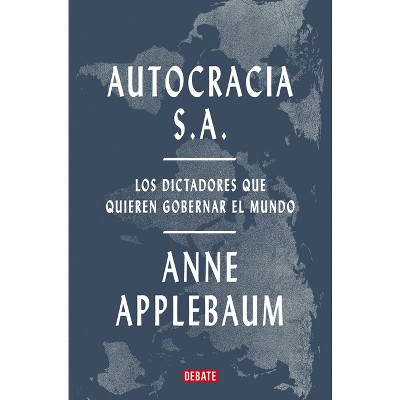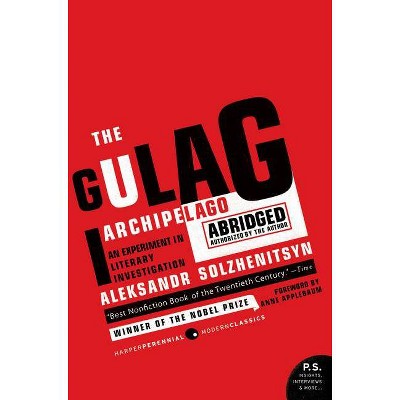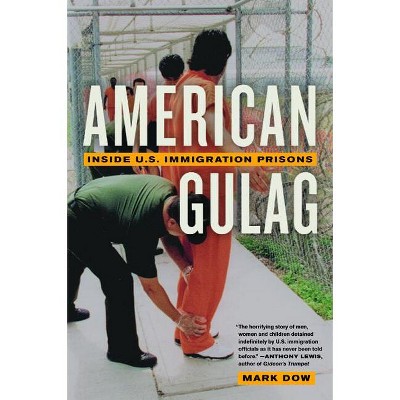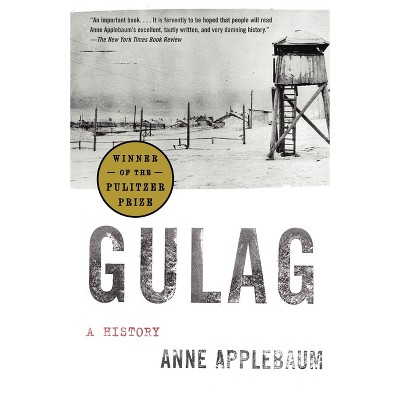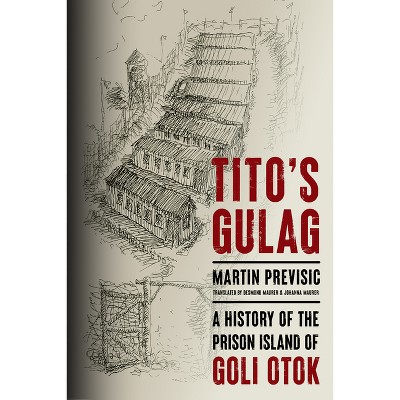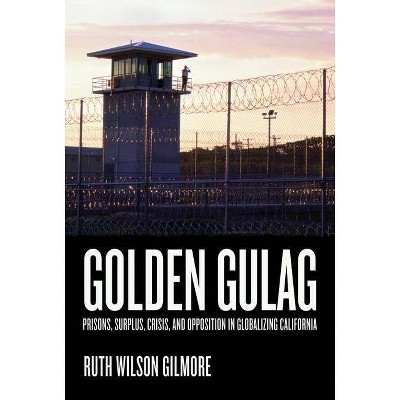Sponsored

Gulag: Historia de Los Campos de Concentración Soviéticos / Gulag: A History of the Soviet Camps - by Anne Applebaum (Paperback)
$29.99
In Stock
Eligible for registries and wish lists
Sponsored
About this item
Highlights
- ***Premio de Periodismo de El Mundo y Premio Francisco Cerecedo de Periodismo 2021***Una extensa y detallada historia del origen y el desarrollo de los Gulags soviéticos y su herencia hasta la actualidad.A partir de estudios, memorias editadas tras la caída de la URSS y algunos archivos que se mantuvieron ocultos durante décadas, Anne Applebaum realiza en este libro una reconstrucción histórica del origen y la evolución de los campos de concentración soviéticos que devuelve este infausto e inolvidable episodio al centro de la tormentosa historia del siglo XX.
- About the Author: Anne Applebaum es columnista en The Atlantic y senior fellow en el Agora Institute de la Johns Hopkins University.
- 680 Pages
- History, Europe
Description
Book Synopsis
***Premio de Periodismo de El Mundo y Premio Francisco Cerecedo de Periodismo 2021***Una extensa y detallada historia del origen y el desarrollo de los Gulags soviéticos y su herencia hasta la actualidad.
A partir de estudios, memorias editadas tras la caída de la URSS y algunos archivos que se mantuvieron ocultos durante décadas, Anne Applebaum realiza en este libro una reconstrucción histórica del origen y la evolución de los campos de concentración soviéticos que devuelve este infausto e inolvidable episodio al centro de la tormentosa historia del siglo XX. Con detalle y precisión asistimos a la vida cotidiana en el campo: las automutilaciones para evitar los trabajos forzados, las bodas entre prisioneros, la vida de las mujeres y los niños, las rebeliones y los intentos de fuga. El libro, documentado, riguroso y con una nueva introducción de su autora, sostiene que el Gulag nació no solo por la necesidad de aislar a los elementos que el Partido Comunista consideraba enemigos, sino para conseguir, al mismo tiempo, una masa de trabajadores esclavos que trabajara a cambio de comida en inmensos proyectos como el canal del mar Blanco o las minas de Kolimá. Tras la descripción del horror organizado por la Unión Soviética, el libro narra cómo Gorbachov, cuya familia se vio directamente afectada por esta política represiva, decidió terminar con este régimen carcelario liberando a la ciudadanía de uno de los sistemas represivos más perversos y crueles que el mundo ha conocido. ENGLISH DESCRIPTION
The Gulag--the vast array of Soviet concentration camps--was a system of repression and punishment whose rationalized evil and institutionalized inhumanity were rivaled only by the Holocaust. The Gulag entered the world's historical consciousness in 1972, with the publication of Alexander Solzhenitsyn's epic oral history of the Soviet camps, The Gulag Archipelago. Since the collapse of the Soviet Union, dozens of memoirs and new studies covering aspects of that system have been published in Russia and the West. Using these new resources as well as her own original historical research, Anne Applebaum has now undertaken, for the first time, a fully documented history of the Soviet camp system, from its origins in the Russian Revolution to its collapse in the era of glasnost. It is an epic feat of investigation and moral reckoning that places the Gulag where it at the center of our understanding of the troubled history of the twentieth century. Anne Applebaum first lays out the chronological history of the camps and the logic behind their creation, enlargement, and maintenance. The Gulag was first put in place in 1918 after the Russian Revolution. In 1929, Stalin personally decided to expand the camp system, both to use forced labor to accelerate Soviet industrialization and to exploit the natural resources of the country's barely habitable far northern regions. By the end of the 1930s, labor camps could be found in all twelve of the Soviet Union's time zones. The system continued to expand throughout the war years, reaching its height only in the early 1950s. From 1929 until the death of Stalin in 1953, some 18 million people passed through this massive system. Of these 18 million, it is estimated that 4.5 million never returned. But the Gulag was not just an economic institution. It also became, over time, a country within a country, almost a separate civilization, with its own laws, customs, literature, folklore, slang, and morality. Topic by topic, Anne Applebaum also examines how life was lived within this shadow how prisoners worked, how they ate, where they lived, how they died, how they survived. She examines their guards and their jailers, the horrors of transportation in empty cattle cars, the strange nature of Soviet arrests and trials, the impact of World War II, the relations between different national and religious groups, and the escapes, as well as the extraordinary rebellions that took place in the 1950s. She concludes by examining the disturbing question why the Gulag has remained relatively obscure, in the historical memory of both the former Soviet Union and the West. A History will immediately be recognized as a landmark work of historical scholarship and an indelible contribution to the complex, ongoing, necessary quest for truth.
Review Quotes
Reseña:
«El Gulag de Anne Applebaum es un libro importante. Sus muchos años de minuciosa investigación han provisto a la autora de un inmenso caudal de fascinantes detalles para recrear una terrible e inolvidable historia.»
Anthony Beevor, autor de Stalingrado
About the Author
Anne Applebaum es columnista en The Atlantic y senior fellow en el Agora Institute de la Johns Hopkins University. En Debate ha publicado Gulag, El Telón de Acero (obra galardonada con el Premio Pulitzer en la categoría general de no ficción), Hambruna roja (con el que ganó el Premio Cundill y fue finalista al National Book Award), El ocaso de la democracia y Entre Este y Oeste. Vive en Polonia con su marido, el político polaco Radosaw Sikorski, y sus dos hijos.Dimensions (Overall): 9.1 Inches (H) x 5.9 Inches (W) x 1.9 Inches (D)
Weight: 1.98 Pounds
Suggested Age: 22 Years and Up
Number of Pages: 680
Genre: History
Sub-Genre: Europe
Publisher: Debate
Theme: Eastern
Format: Paperback
Author: Anne Applebaum
Language: Spanish
Street Date: November 4, 2025
TCIN: 1004266314
UPC: 9791387600143
Item Number (DPCI): 247-38-0879
Origin: Made in the USA or Imported
If the item details aren’t accurate or complete, we want to know about it.
Shipping details
Estimated ship dimensions: 1.9 inches length x 5.9 inches width x 9.1 inches height
Estimated ship weight: 1.98 pounds
We regret that this item cannot be shipped to PO Boxes.
This item cannot be shipped to the following locations: American Samoa (see also separate entry under AS), Guam (see also separate entry under GU), Northern Mariana Islands, Puerto Rico (see also separate entry under PR), United States Minor Outlying Islands, Virgin Islands, U.S., APO/FPO
Return details
This item can be returned to any Target store or Target.com.
This item must be returned within 90 days of the date it was purchased in store, shipped, delivered by a Shipt shopper, or made ready for pickup.
See the return policy for complete information.
Frequently bought together

$10.38 - $23.82
MSRP $18.00 - $38.00 Lower price on select items
Buy 1, get 1 50% off select books
4.6 out of 5 stars with 194 ratings

$18.88
MSRP $27.00
Buy 1, get 1 50% off select books
4.8 out of 5 stars with 577 ratings
